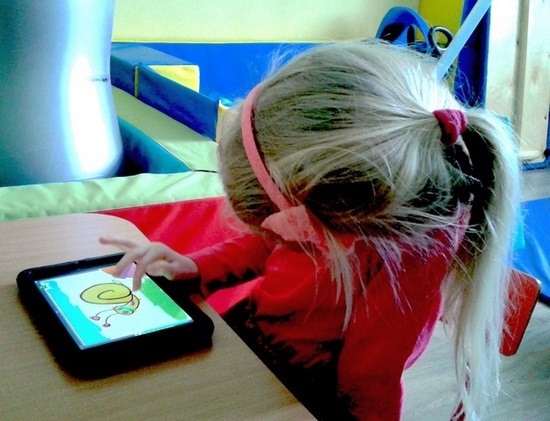
With a tablet, it is possible to identify the symptoms of autism in 93 percent of cases, as indicated by the results of the latest study by Anna Anzulewicz from the JU Institute of Psychology and her collaborators, published by the journal Scientific Reports.
The researchers from Kraków (Anna Anzulewicz, Paweł Jarmołkowicz and Krzysztof Sobota), working within the framework of Harimata start-up in cooperation with the University of Strathclyde in Glaswow study movement patterns related to autism. Tablet became the research tool of their choice. They aimed to check whether analysing the way in which children play tablet games can be used to assess the risk of autism in each individual.
Early diagnosis
Autism occurs in about one per 68 children. The most distinctive symptoms of this disorder are difficulties in communication, expressing and understanding emotions as well as making contacts. People affected with autism are also characterised by repetitive movements and actions. The causes of the disorder are not well established, however, it is known that its development is related to both genetic and environmental factors.
 The first symptoms of autism are displayed by children under the age of 2, but they are often so subtle that parents and doctors tend to ignore them. This is an important issue, since early diagnosis and right therapy often allow autistic children to integrate with the society.
The first symptoms of autism are displayed by children under the age of 2, but they are often so subtle that parents and doctors tend to ignore them. This is an important issue, since early diagnosis and right therapy often allow autistic children to integrate with the society.
“More and more research indicates that people suffering from autism have motor difficulties, which can be observed earlier than other symptoms usually associated with that disorder”, Anna Anzulewicz explains, adding: “We have expected that if this is truly the case, analyses using sensors present in a tablet can prove more reliable than traditional observation, questionnaire, and, in some cases, experimental methods.”
Motor abnormalities on which the researchers focused are related to planning and executing movements, even as simple as reaching for a toy. If identifying movement patterns characteristic of autistic children was possible, a test assessing whether a child suffers from autism on the basis of movement analysis could be created.
Significant differences
The study described in Scientific Reports (Nature publishing group) featured 37 children, aged from 3 to 6, diagnosed with disorders typical of autism and a comparison group consisting of 45 typically developing children. During the research, each of the children sat at a separate table and played two educational games designed for users aged from 2 to 5.
 In the first game, the players were supposed to divide food displayed on the screen and distribute it to four characters, one piece to each of them. During the game, objects that could hinder the players’ efforts (e.g. lamps, which could be turned on) appeared on the tablet screen. The second game consisted in outlining a shape and colouring it in.
In the first game, the players were supposed to divide food displayed on the screen and distribute it to four characters, one piece to each of them. During the game, objects that could hinder the players’ efforts (e.g. lamps, which could be turned on) appeared on the tablet screen. The second game consisted in outlining a shape and colouring it in.
As a child was playing the games, various data was collected, including information about which objects the user interacted with and how it was done, how the child used the tablet etc. The acquisition of the data was possible due to the fact that tablets are fitted with sensors, such as accelerometer and gyroscope, which make it possible to assess how the children moved the device, how fast and how hard they pressed it, etc.. As many as 262 factors describing a child’s behaviour when interacting with the game were identified.
Then, movement patterns of children with disorders typical of autism were compared, using artificial intelligence algorithms, with the patterns displayed by typically developing children. The results show that a simple computer game can be used to differentiate between movement patterns indicating autism and the patterns characteristic of typical development with a 93 percent certainty. The differences in the dynamics of movement were also significant – autistic children made much more rapid movements than their typically developing peers. In addition, children with autism pressed the screen much harder.
A diagnostic tablet
Despite these findings, the researchers are far from stating that there definitely are some movement patterns that can be solely attributed to autism. To further investigate this issue, the scientists are conducting another study, which features a group of more than 400 children: with autism, with development disorders other than autism, as well as those who develop typically.“The results lead to one more important conclusion: the tablet proves a good research tool. Children, including those with disorders, readily use electronic devices, which facilitates focusing their attention. The tasks we employ require no verbal instruction, which makes it possible to examine children with whom verbal communication is difficult. In the future, we would like the tablet-based tests to supplement the traditional diagnostic methods. This technology is not only cheap and commonly known, but also allows gathering detailed data in a precise manner”, stresses Anna Anzulewicz.
Photos of the research: Anna Anzulewicz’s archive
Original text: www.nauka.uj.edu.pl





